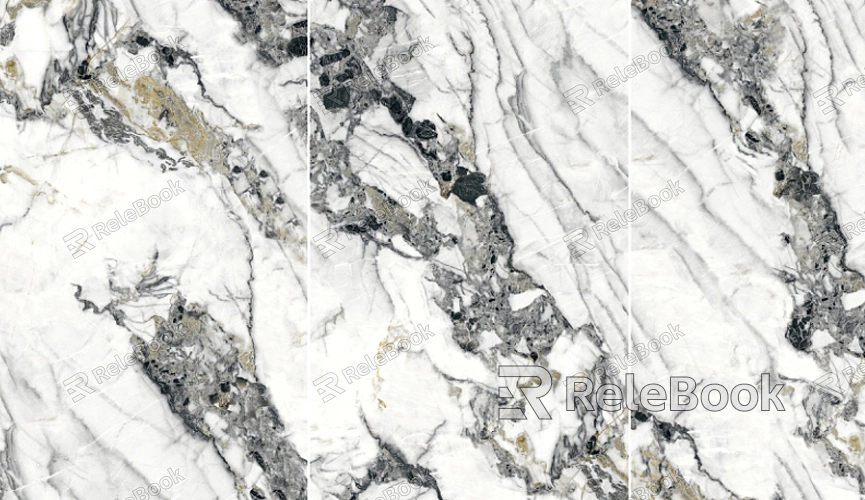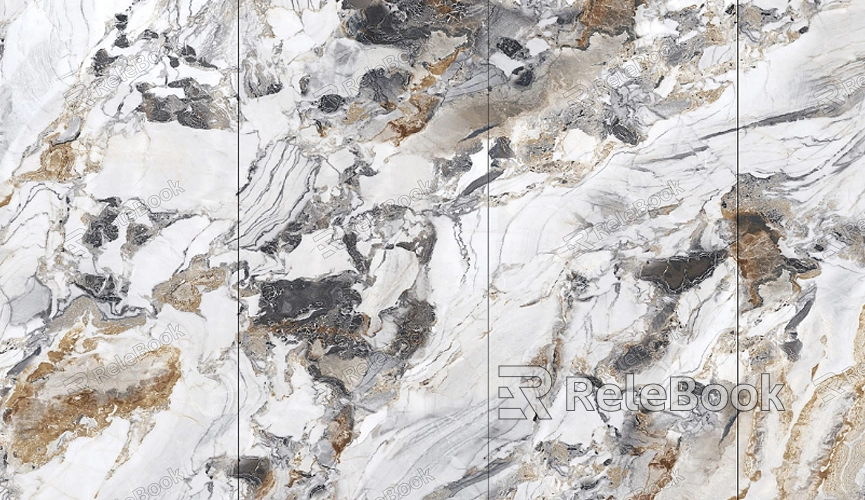What Can Be Used to Color UV Maps?
In 3D modeling, UV map coloring is a crucial step. It not only affects the appearance of the model but also directly impacts the realism and detail of the rendered result. Whether coloring a game character or texturing a scene for an animated movie, the techniques and tools used for UV map coloring play a decisive role. This article will discuss the various tools and methods available for UV map coloring, helping you understand how to choose the right approach to achieve the desired effect.

Understanding the Basics of UV Mapping
Before diving into coloring, it’s essential to understand what UV mapping is. Simply put, a UV map is a 2D representation of a 3D model's surface. This 2D “unwrapping” process is akin to peeling away the skin of a 3D object and flattening it out into a 2D plane, onto which textures, colors, and patterns can be painted. The coloring process typically involves various techniques and tools to help artists achieve the desired visual effects.
Common Methods for Coloring UV Maps
There are several methods used to color UV maps, depending on the project's needs and artistic style. Below are some common coloring techniques:
1. Hand-Painted Textures
Hand-painted textures are one of the traditional methods of coloring, especially for projects that require unique, personalized visual styles. This method involves artists using painting software (such as Photoshop, Krita, or Procreate) to directly paint onto the unwrapped UV map. This approach gives artists full control over every detail, from texture delicacy to color gradients.
Hand-painted textures are particularly suited for showcasing personalized materials like skin, clothing, and various natural elements such as trees and rocks. This technique not only adds an artistic touch to textures but also allows the artist's creativity and skill to shine through.
2. Procedurally Generated Textures
Unlike hand-painted textures, procedurally generated textures are created using algorithms and programs to automatically generate texture effects. This method is ideal for projects that require large quantities of uniform textures, such as expansive game environments or animated film scenes. Common software for procedural texture generation includes Substance Designer, Quixel Suite, and Blender's Node Editor.
By using procedural textures, artists can create complex patterns and details, while also having the flexibility to adjust parameters like noise, roughness, and glossiness. The advantage of this method lies in its efficiency and scalability, making it perfect for large-scale projects requiring repetitive textures.
3. Image-Based Shading (PBR)
Physically-based rendering (PBR) is a widely used shading technique in modern games and animation production. PBR relies on physical principles to simulate how light interacts with surfaces, resulting in more realistic rendering. PBR shading typically includes several texture maps, such as albedo, roughness, metallic maps, and normal maps.
One of the key benefits of PBR shading is its ability to realistically simulate a variety of materials, such as metals, wood, fabric, and skin, giving the final render a more lifelike appearance. Many modern rendering engines, like Unreal Engine and Unity, support PBR workflows, allowing artists to optimize texture effects based on the physical properties of materials.

Tools and Software for UV Map Coloring
Choosing the right tools and software is crucial for UV map coloring. Different tools offer various functionalities and conveniences, enabling artists to work more efficiently. Here are some common tools and software used for UV map coloring.
1. Adobe Photoshop
Photoshop is a widely used image editing software, particularly suited for hand-painting and modifying textures. In UV mapping, Photoshop allows artists to work with powerful layer and brush tools, giving them precise control over every detail, from complex textures to intricate patterns. Whether you're texturing a game character's skin or environmental assets, Photoshop can help achieve highly detailed coloring effects.
2. Substance Painter
Substance Painter is one of the most popular texture painting tools, particularly suited for 3D UV map coloring. It provides a real-time rendering viewport, allowing artists to immediately see the effects of their changes. Substance Painter supports PBR workflows and can create complex materials with layers for glossiness, roughness, and other surface details. Its powerful features make it an ideal choice for creating high-quality textures in a short amount of time.
3. Blender
Blender is a free and open-source 3D software suitable for all aspects of modeling, texturing, and rendering. Blender offers a robust UV unwrapping toolset and has built-in texture painting features. Its “texture paint” mode lets artists directly paint textures onto 3D models, providing more flexibility for UV map coloring. Blender also supports various texture types, such as diffuse, normal, roughness maps, and more, making it a versatile option for texturing.
4. 3D-Coat
3D-Coat is a tool specialized in texture painting, perfect for working with complex UV maps. It offers a full suite of painting, sculpting, and rendering tools that support everything from basic texture painting to intricate detail sculpting. 3D-Coat is highly efficient for creating high-quality textures, especially for rapid iteration in projects where speed is essential.
How to Optimize UV Map Coloring
Optimizing the coloring of UV maps isn’t just about choosing the right tools and methods; it also involves smartly applying these tools to achieve the best possible results.
1. Efficient UV Unwrapping
UV unwrapping is the foundation of UV map coloring. How the model is unwrapped into a 2D layout directly affects how the texture will map onto the surface. Ensure the unwrapping process avoids stretching, overlapping, or distortion, as this can lead to texture artifacts. Additionally, plan the UV layout carefully to make the most of the texture space, ensuring maximum resolution efficiency.
2. Multiple Texture Layers
Using multiple texture layers can enhance the surface detail and depth of a model. For example, layering dirt, scratches, and shadows over a base texture can give the model a more realistic appearance. Additionally, using normal maps, glossiness maps, and other supporting textures can help simulate complex material interactions and add finer details to the surface.
3. Texture Size and Resolution
Texture size and resolution have a direct impact on the final result. Low-resolution textures may appear blurry, while high-resolution textures can increase rendering load. It’s important to choose the appropriate texture resolution based on the requirements of the project, especially in games and real-time rendering.
UV map coloring is an essential part of the 3D modeling process, from hand-painting textures to using procedurally generated textures. Each method and tool has its own unique use case and advantages, allowing artists to achieve specific visual effects based on project requirements. By selecting the right coloring techniques and optimizing your workflow, you can create more vibrant and detailed visuals. If you’d like to further enhance your texture creation skills, visit Relebook’s website to download high-quality 3D models and textures, and start your creative journey today.
FAQ
Why is UV unwrapping so important for coloring?
UV unwrapping determines how a 3D model is laid out in 2D space. Proper unwrapping ensures that textures are mapped correctly and uniformly across the model’s surface, which is essential for achieving high-quality coloring effects.
What’s the difference between hand-painted and procedurally generated textures?
Hand-painted textures rely on the artist's creative skills and offer unique artistic flair, making them perfect for personalized materials. On the other hand, procedurally generated textures use algorithms to create textures automatically, making them ideal for projects that require large quantities of uniform textures.
Why is PBR becoming more popular?
PBR allows for more realistic simulations of light interactions with materials, making the rendered result appear more natural. It has become the standard for modern games and animations due to its ability to enhance visual quality through physically accurate lighting and material properties.

